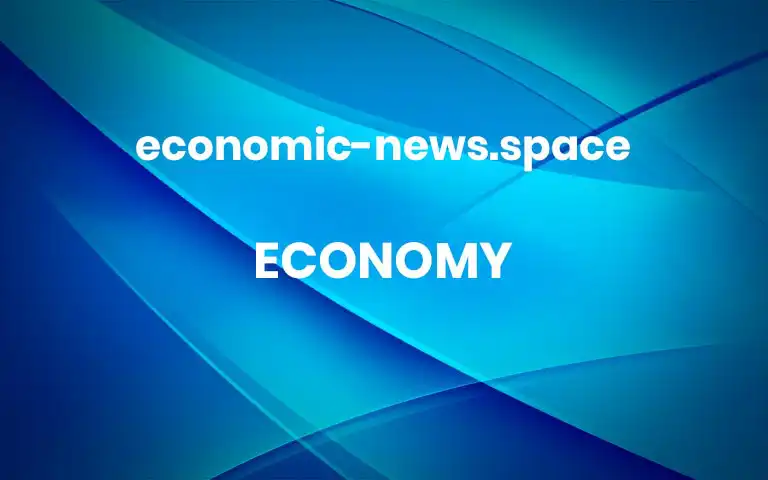Sarah Bloom Raskin is a longtime Washington policy player with progressive credentials and a track record of speaking out against the fossil fuel industry, qualities that helped her to win the White House’s nomination to be America’s top bank cop.But those same views could leave her with a narrow path to confirmation as the Federal Reserve’s vice chair for supervision — especially if Senator Ben Ray Luján, a New Mexico Democrat who is recovering from a stroke, is not present for her vote before the full Senate. (A senior aide to Mr. Luján said he was expected to make a full recovery, and would return in four to six weeks, barring complications.)And Ms. Raskin’s views are almost certain to ignite sparks at her hearing before the Senate Banking Committee on Thursday.Ms. Raskin has been nominated alongside Lisa D. Cook and Philip N. Jefferson, both economists up for seats on the Fed’s Board of Governors. Ms. Raskin, Dr. Cook and Dr. Jefferson will field questions from the Senate Committee on Banking, Housing and Urban Affairs at 8:45 a.m. on Thursday.Ms. Raskin, a former Fed governor and high-ranking Treasury official who was most recently a professor at Duke Law School, is seen as a known entity by the banking industry that she would oversee. But business groups have been critical of her attention to climate issues — including an opinion piece she wrote in 2020 criticizing the Fed’s decision to design one of its emergency loan programs in a way that allowed fossil fuel companies to access emergency loans.“I’m deeply concerned that Sarah Bloom Raskin has — let’s be honest, she has explicitly, publicly advocated that the Fed use its powers to allocate capital,” Senator Patrick J. Toomey of Pennsylvania, the top Republican on the committee, said in an interview on Tuesday. “I think that’s disqualifying, and I think that is going to be a topic of discussion.”Such full-throated opposition from Republicans may mean more than just a heated hearing — Ms. Raskin may need to maintain the support of every Democrat in the Senate to stay on the narrow path to confirmation. If Democrats were to lose their fragile grasp on the Senate majority because Mr. Luján has not returned yet, it is not clear that she would garner the votes she would need to pass.Fed nominees need a simple majority to clear the Senate Banking Committee and then to win confirmation from the Senate as a whole, meaning that it is possible that Ms. Raskin could skate through if all 50 senators who caucus with Democrats vote in her favor, with Vice President Kamala Harris breaking a tie.Vice chair for supervision is arguably the most important job in American financial regulation, and given those high stakes, Ms. Raskin’s chances are being closely watched.“I’m not expecting her to get many, if any, Republican votes,” said Ian Katz, a managing director at Capital Alpha Partners, explaining that he thinks she will ultimately secure enough Democratic support to pass, assuming all the Senators, including Mr. Luján, vote. “You hear different things from the industry: You hear some concerns that she is too progressive, but you also hear that she’s well within the mainstream.”Oil and gas businesses are mounting a campaign against more decisive climate monitoring by the Fed, worried that the central bank will subject banks to stringent oversight that dissuades them from lending money to the industry. This could bring skeptical questioning for all three nominees.“I am concerned about all of the Fed nominees and their apparent willingness, despite what some of them said, to include bank and financial regulations designed to prohibit legal industries from operating in the United States borrowing money,” Senator Jerry Moran of Kansas, a Republican who sits on the committee, said on Wednesday.Mr. Toomey said during an interview on Wednesday that he also had some reservations about Dr. Cook.Lisa D. Cook, a Michigan State University economist well known for her work in trying to improve diversity in economics, will also face questions from the committee on Thursday.Brittany Greeson for The New York TimesMuch of the opposition coming from Republicans and lobbyists alike is aimed at Ms. Raskin, though. She argued in a Project Syndicate column recently that “all U.S. regulators can — and should — be looking at their existing powers and considering how they might be brought to bear on efforts to mitigate climate risk.”But Ms. Raskin struck a gentler tone in her prepared testimony for the hearing, released Wednesday night, noting that the role does not involve excluding certain sectors and asserting that bank supervisors must ensure that “the safety of banks and the resilience of our financial system are never compromised in favor of short-term political agendas or special interest groups.”It is unclear at this point whether those assurances will be enough for her critics.The Chamber of Commerce, in a letter to the Senate committee last week, urged lawmakers to ask Ms. Raskin about her position on whether the Fed’s regulatory approach should try to curb credit access for oil and gas companies. The business group asked whether Ms. Raskin would be independent of politics. After Democratic members of the Federal Deposit Insurance Corporation board clashed with and ultimately precipitated the resignation of the Trump appointee Jelena McWilliams, who was the regulator’s chairwoman, some Republicans have raised concerns that something similar could happen at the Fed. In December, partisan politics helped to scupper the nomination of Saule Omarova, who withdrew herself from consideration to be comptroller of the currency after attacks from Republicans and banking lobbyists, and as she struggled to draw wide enough support from Democrats.By contrast, the banking industry has taken a more benign view of Ms. Raskin. The Financial Services Forum, which represents the chief executive officers of the largest banks, congratulated Ms. Raskin and the other White House Fed picks in a statement after their nominations were announced, as did the American Bankers Association.Ms. Raskin is seen as a qualified candidate who understands the roles various regulators play in overseeing banks, according to one banking industry executive who asked not to be identified discussing regulatory matters. Even though bankers expect Ms. Raskin to be confirmed, they are awaiting more clarity around her stance on climate finance and disclosures, the executive said.As she is received as a mainstream pick, centrist Democrats have sounded content with Ms. Raskin.“I’ve been very impressed with her,” Senator Mark Warner, Democrat of Virginia, said on Tuesday, adding that he had not met her yet but that he was “favorably inclined” and noting that banks have expressed comfort with her.Senator Joe Manchin III from West Virginia, a key centrist Democrat, said on Wednesday that he hadn’t yet studied the nominees, adding that he’s “going to get into that” because he’s “very concerned” about issues including inflation.A Harvard-trained lawyer, Ms. Raskin is a former deputy secretary at the Treasury Department, where she focused on financial system cybersecurity, among other issues. She also spent several years as Maryland’s commissioner of financial regulation. Ms. Raskin is married to Representative Jamie Raskin, a Maryland Democrat.If confirmed, she would be only the second person formally appointed as the Fed’s vice chair for supervision, succeeding Randal K. Quarles, a Trump administration pick who typically favored lighter and more precise regulation. Ms. Raskin, by contrast, has a track record of calling for stricter regulation. Dr. Cook and Dr. Jefferson might both might be quizzed about their views on policy and professional backgrounds. The Fed has seven governors — including its chair, vice chair and vice chair for supervision — who vote on monetary policy alongside five of its 12 regional bank presidents. Governors hold a constant vote on regulation.Philip N. Jefferson, an administrator and economist at Davidson College who has worked as a research economist at the Fed, is also a nominee for the Fed’s board.John Crawford/Davidson CollegeDr. Cook, who would be the first Black woman ever to sit on the Fed’s board, is a Michigan State University economist well known for her work in trying to improve diversity in economics. She earned a doctorate in economics from the University of California, Berkeley, and was an economist on the White House Council of Economic Advisers under President Barack Obama.“High inflation is a grave threat to a long, sustained expansion, which we know raises the standard of living for all Americans and leads to broad-based, shared prosperity,” Dr. Cook said, after emphasizing her decades of experience, calling tackling America’s current burst in prices the Fed’s “most important task.”Dr. Jefferson, who is also Black, is an administrator and economist at Davidson College who has worked as a research economist at the Fed. He has written about the economics of poverty, and his research has delved into whether monetary policy that stokes investment with low interest rates helps or hurts less-educated workers.He seconded that the Fed must “ensure that inflation declines to levels consistent with its goals,” speaking in his prepared testimony.Dr. Cook, Dr. Jefferson, and Ms. Raskin are up for confirmation alongside Jerome H. Powell — who had previously been renominated as Fed chair — and Lael Brainard, a Fed governor who is the Biden administration’s pick for vice chair. Senator Sherrod Brown of Ohio, the committee chairman, said all five candidates will face a key committee vote on Feb. 15, and that Senator Chuck Schumer of New York, the majority leader, “knows to move quickly” for a full floor vote.If all pass, the Fed’s leadership will be the most diverse in both race and gender that it has ever been — fulfilling a pledge of Mr. Biden’s to make the long heavily male and white central bank more representative of the public that it is intended to serve. More




